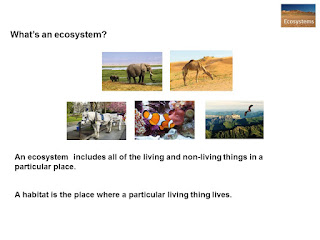 |
| Oil Station in the sea |
Petroleum
This black liquid forms underground from decayed plants and animals. It's the source of the fuel oil, diesel fuel and petrol that we use for heating and running vehicles.
Fuel oil is also used to produce electricity in oil-burning power stations.
 |
| Crude oil |
Petroleum, also called crude oil, is a fossil fuel. Like coal and natural gas, petroleum was formed from the remains of ancient marine organisms, such as plants, algae, and bacteria. Over millions of years of intense heat and pressure, these organic remains (fossils) transformed into carbon-rich substances we rely on as raw materials for fuel and a wide variety of products.
Millions of years ago, algae and plants lived in shallow seas. After dying and sinking to the seafloor, the organic material mixed with other sediments and was buried. Over millions of years under high pressure and high temperature, the remains of these organisms transformed into what we know today as fossil fuels. Coal, natural gas, and petroleum are all fossil fuels that formed under similar conditions.
Coal
This black rock is composed mainly of carbon. It's formed underground from decayed plants. Coal is used as fuel in some industries, and to produce electricity in coal-burning power stations. |
| Coal Mine |
Coal is a hard rock which can be burned as a solid fossil fuel. It is mostly carbon but also contains hydrogen, sulphur, oxygen and nitrogen. It is a sedimentary rock formed from peat, by the pressure of rocks laid down later on top.
Surface mining
Miners can use excavators and bulldozers to dig for coal if it is less than 200 feet underground. They remove soil, and then layers of rock to expose or reveal the coal. Sometimes miners have to use dynamite to remove the tops of mountains. This makes it easier to get to the coal. After the coal is collected, the area is filled in with soil and plants and trees are re-planted. This method is cheaper and safer than underground mining.
Natural Gas
Natural Gas is a mixture of gases that have formed from decayed living organisms. It's found underground. Natural gas is used as a fuel in many industries and to produce electricity in gas-burning power stations. It's used in homes for heating and cooking.
 |
| Natural gas |
Natural gas is colourless and lighter than air. It’s mainly made up of molecules of methane and is found in reservoirs deep under the ground, often alongside oil or coal.
Uranium
Uranium is a chemical element with the atomic number 92 in the periodic table. It is represented by symbol U. Uranium is a silvery white metal, found in the row seven of the periodic table in the actinide series. Among the naturally occurring elements uranium is the heaviest element.
This radioactive metal is found in rocks. It's used in nuclear power stations to produce heat in nuclear reactions. Electricity is produced from this heat.
Uranium is used by nuclear power plants as a source of fuel. Uranium is known for its unique nuclear properties. Nuclear power plants use uranium to cause a controlled fission chain reaction to generate power. This reaction helps to generate a huge amount of power from a small amount of uranium. One kg of uranium can produce energy equal to the energy produced by 1500 tons of coal.













































